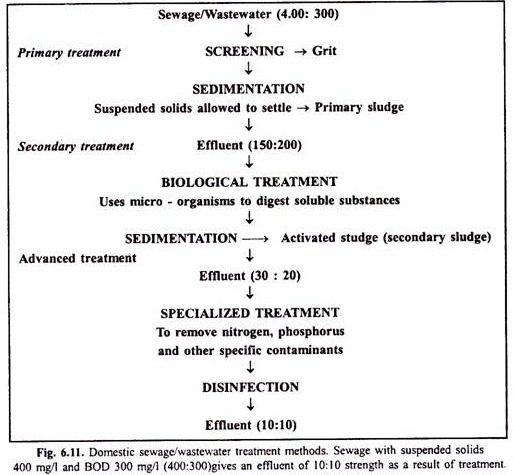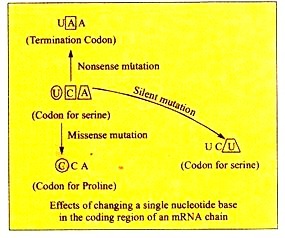ADVERTISEMENTS:
The following points highlight the four main structures of Protein Organisation. The structures are: 1. Primary Structure 2. Secondary Structure 3. Tertiary Structure 4. Quarternary Structure.
1. Primary Structure:
It is the description of basic structure of a protein. This includes number of polypeptides, number and sequence of amino acids in each polypeptide. The latter is determined genetically (by DNA) through transcription and translation.
Specific amino acids determine the places where polypeptides are to bend or fold and where the different lengths will be attracted to each other. The distance between two adjacent peptide bonds is about 0.35 nm. Conventionally, the left end of the protein primary structure is represented by the first amino acid while the right end is represented by last amino acid.
2. Secondary Structure:
ADVERTISEMENTS:
It is the development of new stearic relationships of amino acids present in the linear sequence inside the polypeptides. Some of the new relationships are of regular nature and give periodicity to the structure. There are three types of secondary structures— α-helix, β-pleated and collagen helix.
The α and β terms simply designate the first and the second type of secondary structures discovered in proteins. In α- helix the polypeptide chain is coiled spirally, generally in right handed manner.
At places the helix is less regular, forming random coils. The helix is stabilized by hydrogen bonds between oxygen of carboxylic group (— CO group) of one amino acid residue and > NH group of next fourth amino acid residue.
Actually all the main chain —CO and > NH groups are hydrogen bonded, α-helical coiled secondary structure is found in several proteins, e.g., keratin (hair), myosin, tropomyosin (both muscles), epidermin (skin), fibrin (blood clot). Two or more polypeptides can further coil around each other to form cables. This gives helical strand.
ADVERTISEMENTS:
In β-pleated secondary structure two or more polypeptide chains get interconnected by hydrogen bonds. A sheet is produced instead of a fibre or rod in α-helix. Therefore, this secondary structure is often called pleated sheet or β-pleated sheet.
Adjacent strands of polypeptides may run in the same direction (parallel β-sheet, e.g., β-keratin) or in opposite directions (antiparallel β-sheet, e.g., fibroin of silk). In some cases single polypeptide may show α-helix in some portion and bent to form two or more parallel strands with β-pleated structure in other parts, e.g., ribonuclease. β-pleated proteins are more extended than the ones having a-helix.
In collagen (the most abundant protein in our body), Ramachandran (1954) discovered that there are generally three strands or polypeptides coiled around one another (Fig. 9.15). The coil is strengthened by the establishment of hydrogen bond between > NH— group of glycine residue of each strand with —CO group of the other two strands. There is also a locking effect with the help of proline and hydroxyproline residues.
3. Tertiary Structure:
There is bending and folding of various types to form spheres, rods or fibres. It further brings new stearic relationships of amino acids specially those which are far apart in the linear sequence. The active sites (e.g., polar side chains) of the protein are often brought towards the surface.
Certain other side chains (e.g., hydrophobic) are brought to the interior of the protein. Tertiary structure is stabilized by several types of bonds— hydrogen bonds, ionic bonds, van der Waal’s interactions, covalent bonds, hydro- phobic bonds (Fig. 9.16). Tertiary structure gives the protein a three dimensional conformation (Fig. 9.17).
In protein structure, covalent bonds are the strongest. They are of two types, peptide bonds and —S—S— (disulphide) bonds. Ionic bonds or electrostatic bonds occur due to attractive force between oppositely charged ionised groups e.g., —NH3+ and —COO–.
ADVERTISEMENTS:
Hydrogen bonds develop due to sharing of H+ or proton by two electronegative atoms, van der Waals interactions develop with charge fluctuations between two closely placed groups (e.g., —CH2OH and —CH2OH). Hydrophobic bond is formed between two nonpolar groups. It helps in excluding water in that area and increasing compaction.
The bonds required to form tertiary structure can be easily broken by high energy radiations, high temperature, drastic changes in pH and salts of heavy metals. This process of degrading the tertiary structure is known as denaturation.
Proteins can also be precipitated or coagulated by several chemicals and low temperature. In some cases removal of denaturing agent causes re-establishment of the bonds required for maintenance of tertiary structure. The phenomenon is called renaturation.
4. Quarternary Structure:
This is found only in multimeric proteins. Each polypeptide develops its own tertiary structure and functions as subunit of the protein. The different subunit chains fit or pack together to give the conformation, e.g., haemoglobin (four polypeptides, 2α and 2β.



